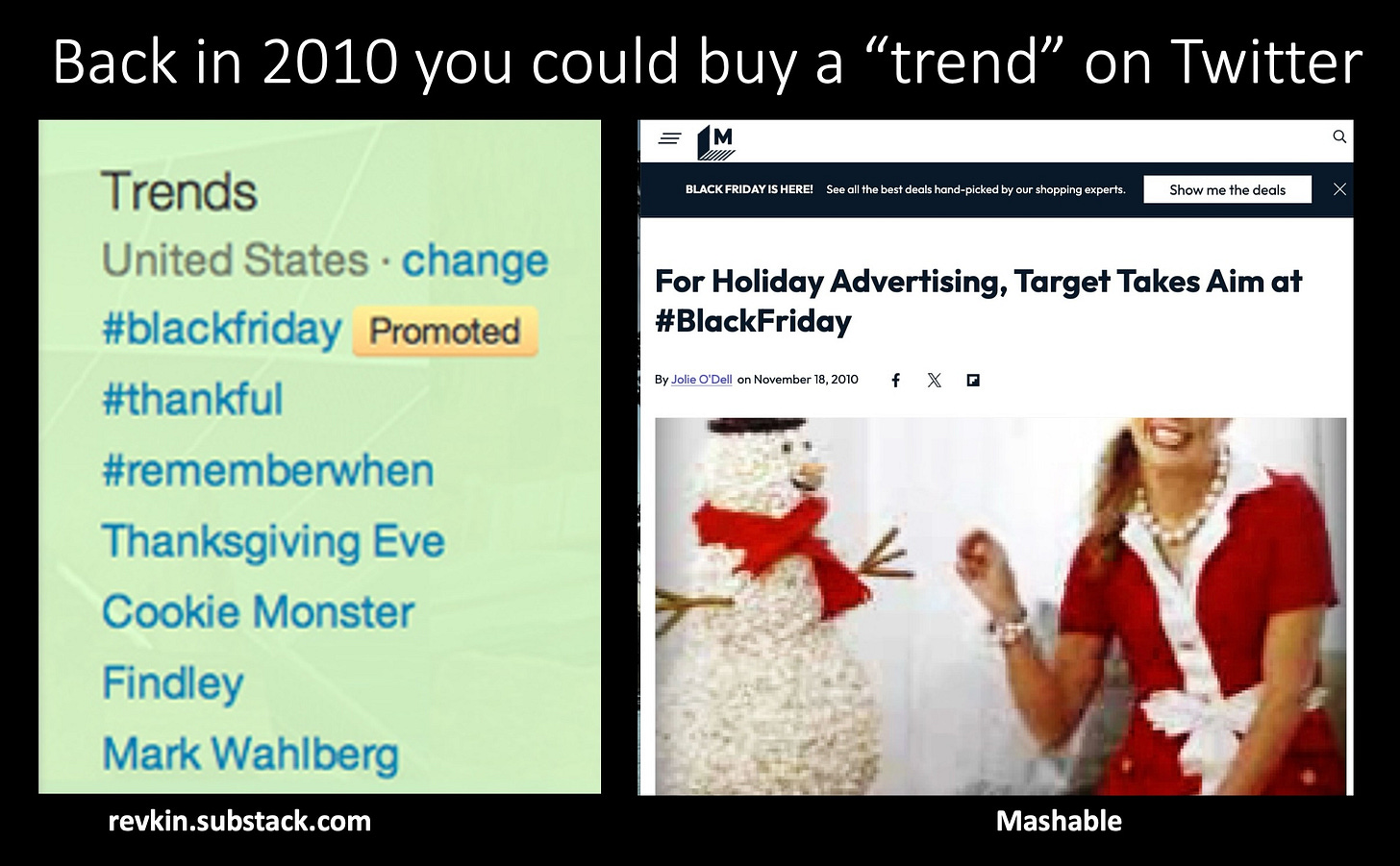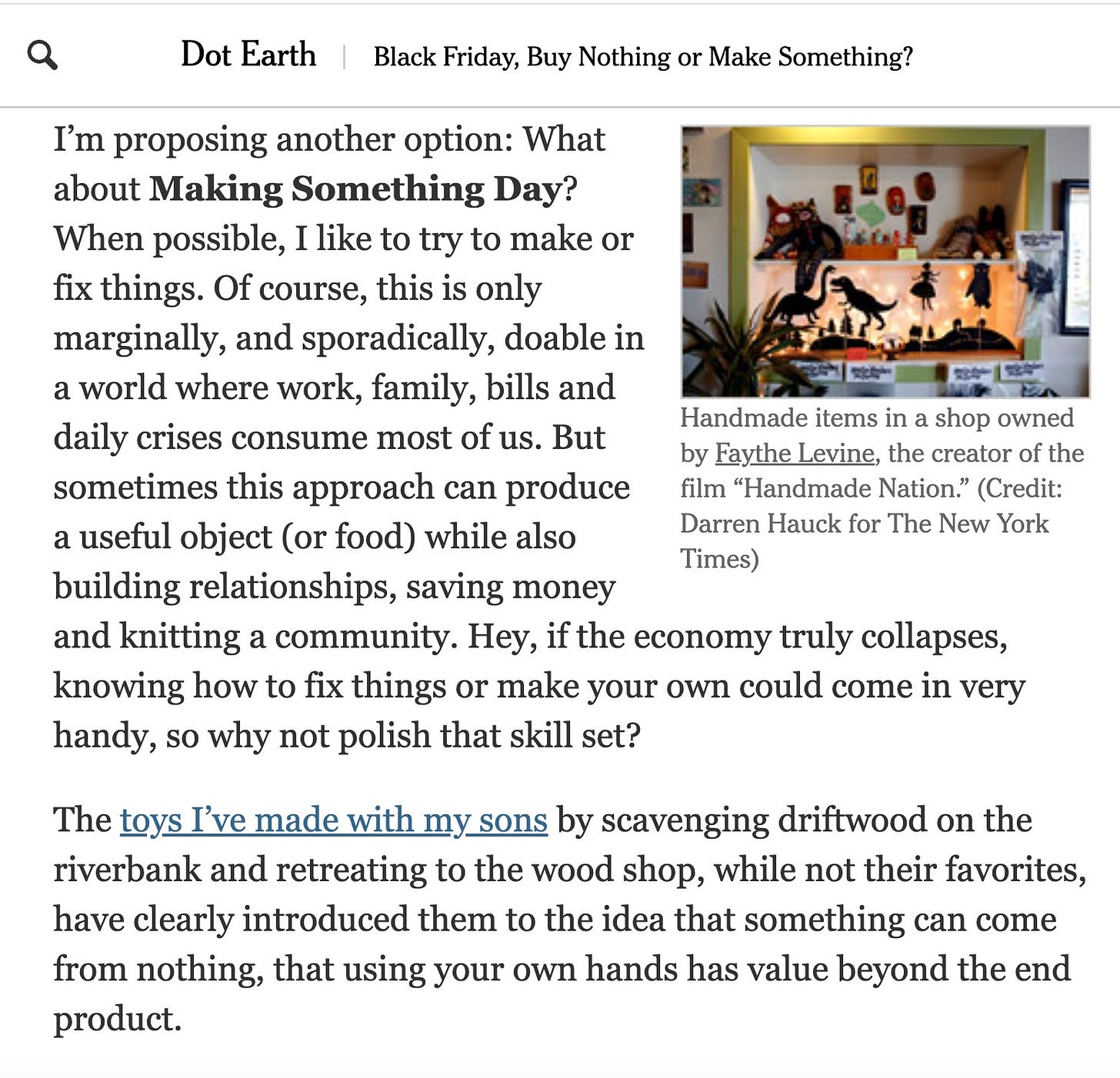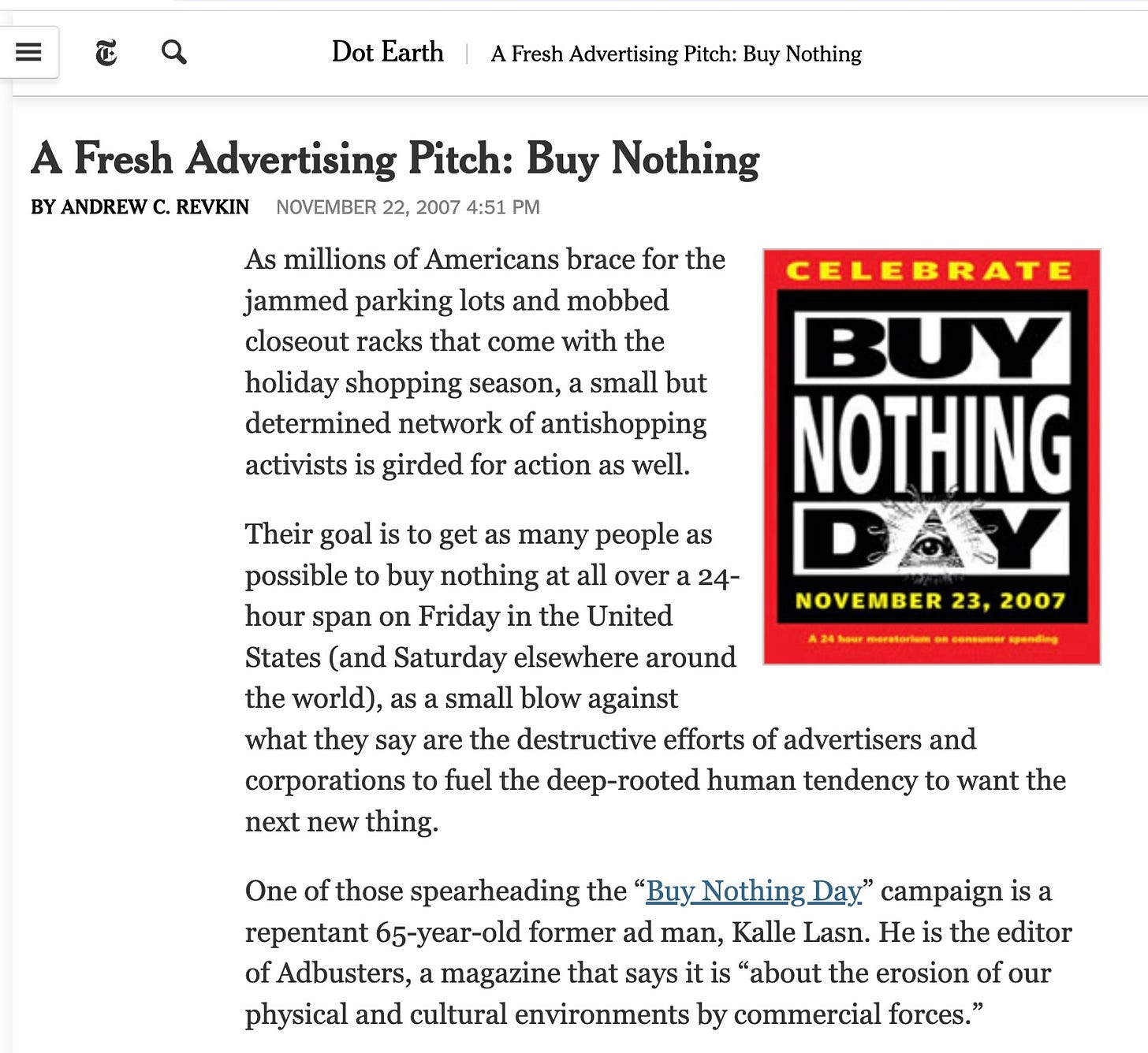From Dot Earth Days - Early Hints of the Death of Twitter on #BlackFriday in 2010
And ponder "Buy Nothing Day" or "Make Something Day" alternatives
Way back in the days heading up to Thanksgiving and Black Friday in 2010, I spotted a hint of the death of Twitter - the “promoted trend.” It’s worth posting this again now that we’ve seen X devolve into a “promote whatever overlord Elon Musk desires” platform - including a president. (I’m still there but do find growing utility on Bluesky.)

From Dot Earth, November 26, 2010 → Twitter can be a remarkable tool. For me, it’s kind of like having a planet-spanning two-way sensory apparatus tracking sources of information or insights ranging from Stan Lee to the Dalai Lama, NASA’s Asteroid Watch program to the hashtag #SaveSharks. [This remains true, when you dive beneath the toxic surface.]
But it’s also a medium, like all others, that reflects broader societal norms, including the one requiring almost anything useful to provide a revenue stream for its creators. And so comes the dawn of a very strange concept, the Twitter “promoted trend.” [Now there are “trend takeovers” on X].
Imagine if someone paid society to shift back to, say, wide polka-dot ties. Well, you can nudge a “trend” on Twitter to the top of the list for money. (Of course you can also cut the security lines at airports with money. And the yellow identifying labels, as in the image above, distinguish this from what record companies did to manufacture hits.)
The first one I noticed was the paid promotion of #BlackFriday by Target in the run-up to today’s shopping frenzy. Countering such efforts is the perennial “Buy Nothing Day” campaign of anti-consumption crusaders like Reverend Billy and the Life After Shopping Gospel Choir.
Try “Make Something Day”
There’s another alternative to both extremes, which I’ve pushed once in awhile on Dot Earth: Make Something Day. I’ll give it one more push, including a proposed (and unpromoted) Twitter hashtag: #MakeSomething.

It can take time, sure. It took me more than two years to move from plans to action in turning field-sawn boards into a kitchen table. But it sure feels gratifying to sit at that table each morning.
[I’ve made several other tables since then now that we’re settling down in Maine.]
It is an uphill battle, of course. The marketing of consumption itself, let alone specific products to consume, has been in high gear since at least 2006, when President George W. Bush encouraged Americans to “ go shopping more” to avert a recession. That message, although tempered by the housing implosion, has grown louder in the United States of late, with the confidence of consumers a predicate for resumed prosperity.
Now the mantra has spread in a big way to China, and among economists who see more spending by Chinese consumers as a way forward for the global economy. This passage from David Leonhardt’s magazine story, “In China, Cultivating the Urge to Splurge,” says it all: “For the rest of the world, the Chinese consumer is one of the best hopes for future economic growth. In the years ahead, when the United States, Europe and Japan will have no choice but to slow their spending and pay off their debts, China could pick up the slack.”
In the end, a balance will be needed, involving savings and commerce, if there is a chance of developing economies that function for the long haul, and that can fit on a finite planet. There was an interesting discussion of the need for balance, and a smaller role in the global economy for American consumers, on the Room for Debate blog last year.
The argument for getting Americans to save more and the Chinese to spend more was laid out on the Harvard Business Review blog.
Chances of the world settling in on a common sweet spot of saving and spending are low to nil. And while it’s great to make something, it’s impossible for everyone to make everything. (While I could make the kitchen tabletop, I couldn’t make the saw, the sander or the finely turned legs, which I ordered through the miracle of the Web from a Vermont company called TableLegs.com.)
So some shopping is inevitable, and commerce is a prime driver of innovation and progress, as Matt Ridley has so convincingly described in “The Rational Optimist” (which I think would make a great holiday present, actually ;-).
Only you can figure out for yourself how much is too much, and when to make something instead of buying something. <- end of the 2010 post from Dot Earth
Postscript - Kalle Lasn, the former ad man who launched Adbusters and Buy Nothing Day, is still at it. And of course so is Reverend Billy Talen.
Meet the "Earthalujah" Stop-Shopping Preacher and Choir
UPDATE and program note: On Sunday, August 11, I did a live check-in with the “Reverend” Billy Talen and his Stop Shopping Choir in a rehearsal for their weekly Earth Church 5 p.m. performance on the Lower Ea…






